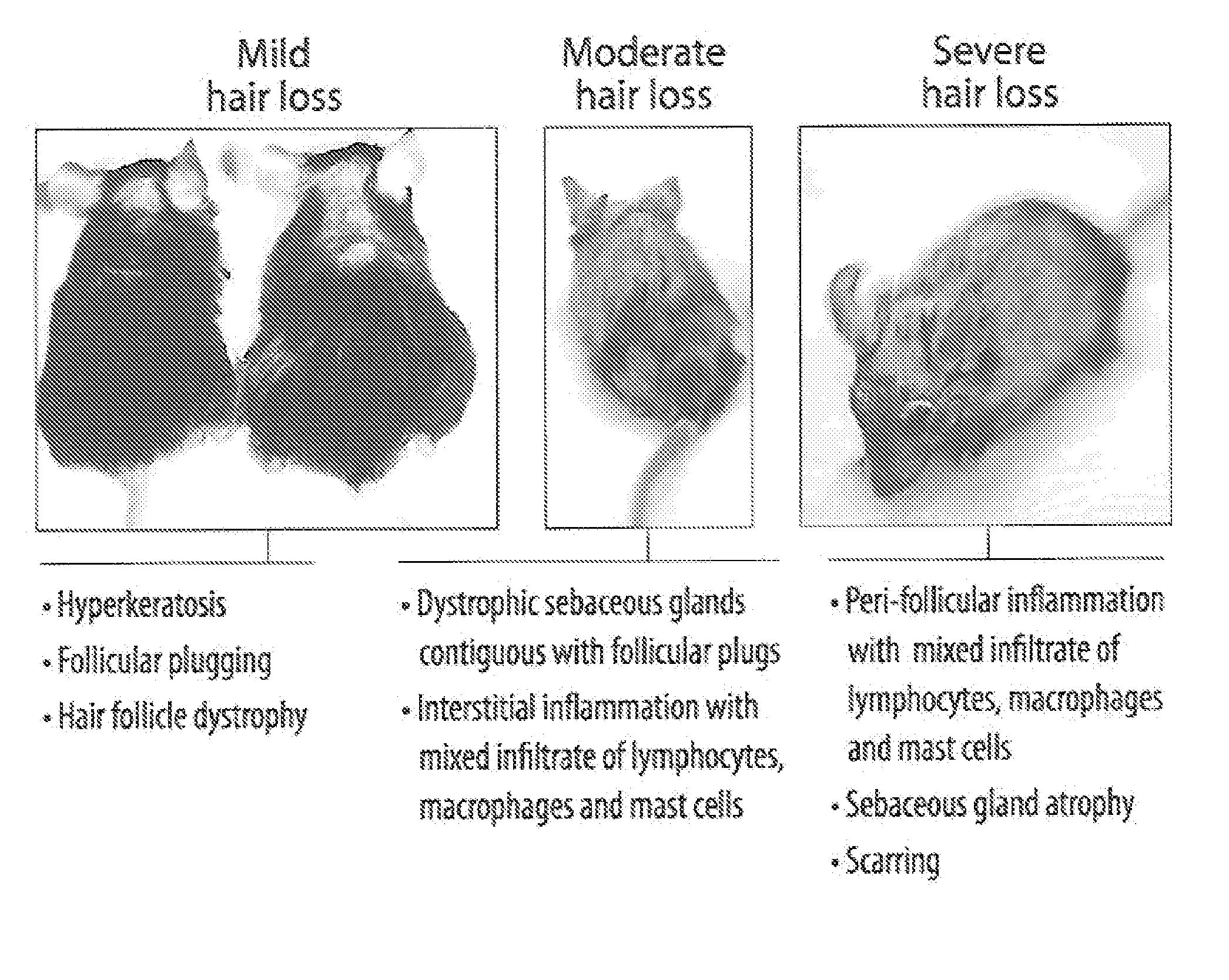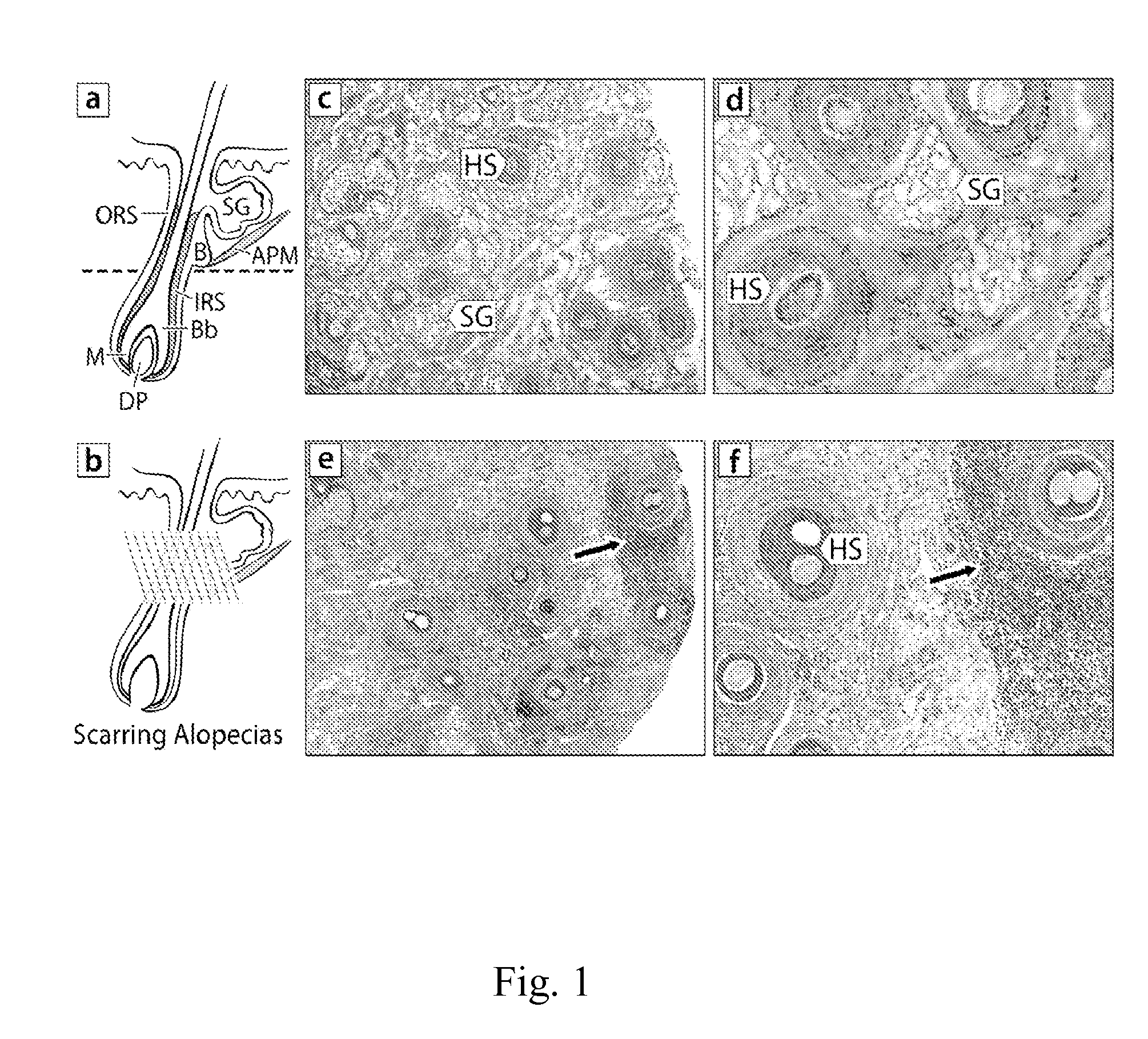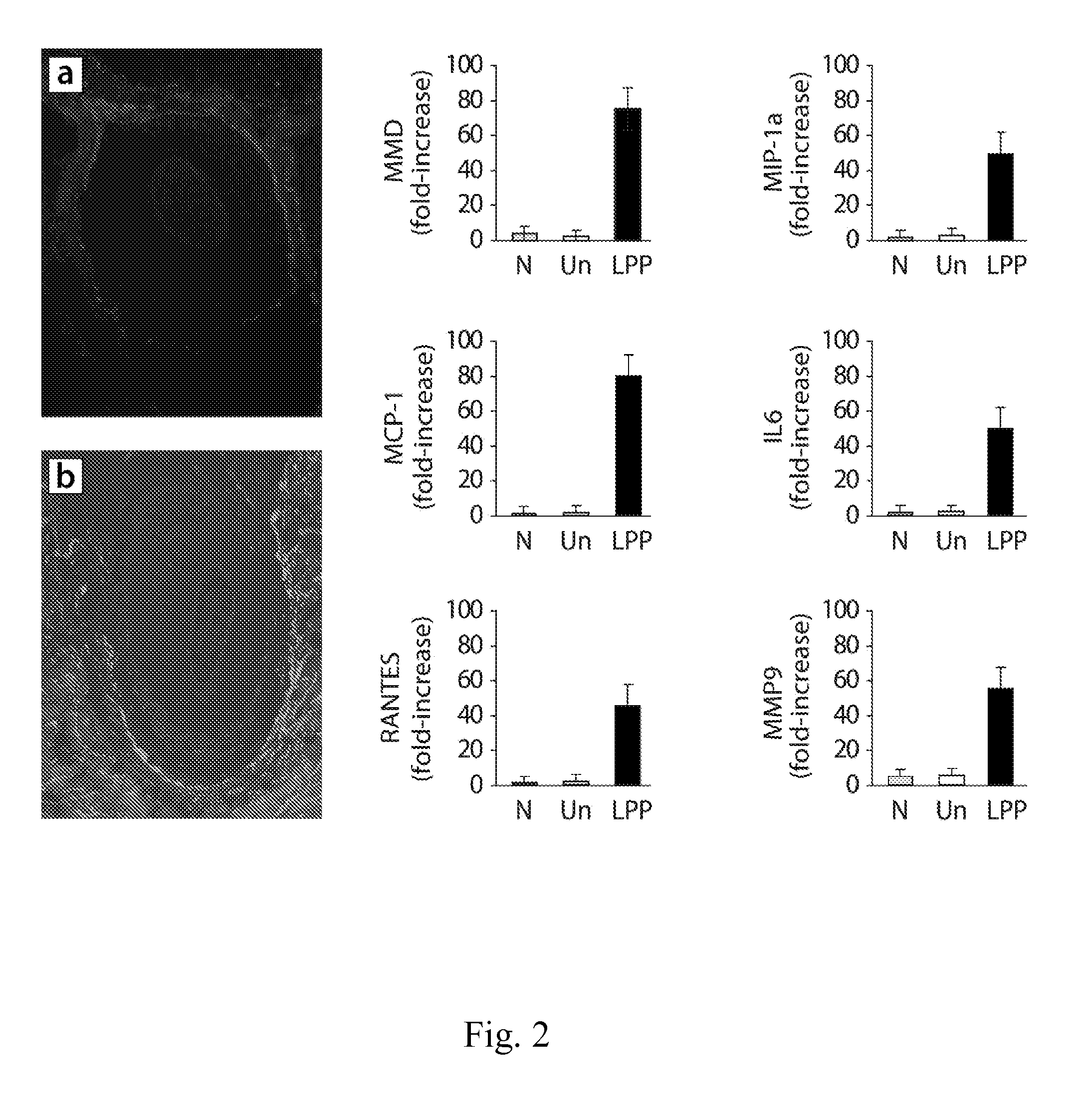Method of treating dermatological disorders
a dermatological disorder and dermatological technology, applied in the field of dermatological disorders, can solve the problems of hair loss, hair loss, and possibility of hair follicle regeneration, and achieve the effects of permanent hair loss, and avoiding the formation of new hair follicles
- Summary
- Abstract
- Description
- Claims
- Application Information
AI Technical Summary
Problems solved by technology
Method used
Image
Examples
example 1
Background
[0112]Cicatricial or scarring alopecia are a diverse group of hair disorders that cause permanent destruction of the pilosebaceous unit (PSU). Cicatricial alopecias that result from follicular loss due to thermal burns, metastatic cancer, trauma, and radiation are referred to as secondary (Stenn, K. S., Sundberg, J. P., and Sperling, L. C. 1999. Hair follicle biology, the sebaceous gland, and scarring alopecias. Arch Dermatol 135:973-974; Price V H. 2006. The Medical Treatment of Cicatricial Alopecia. Seminars in Cutaneous Medicine and Surgery 25:56-59). Primary cicatricial alopecias (CA) are characterized by a folliculocentric inflammation with the ultimate replacement of the follicle with fibrous tissue and progressive and permanent hair loss (Arch Dermatol 135:973-974; Seminars in Cutaneous Medicine and Surgery 25: 56-59). The etiology and pathogenesis of CA remains unclear and they are currently treated as inflammatory disorders. Depending on the inflammatory cells det...
example 2
[0160]Patients were treated with Actos (Pioglitazone), a PPARγ agonist that is currently used to treat diabetes.
[0161]Patients with LLP were given a low dose of Actos, i.e., less than about 15 mg / daily. All (5) patients reported a significant decrease in itching, burning and pain associated with lichen planopilaries. The histology of scalp biopsy of one of the patients before, after one year of treatment, and after two years of treatment are shown in FIGS. 18-20. At two years, there is complete clearing of inflammatory cells. Reduction is already seen after 1 year. Therefore, PPAR agonist is effective in reducing symptoms.
[0162]From the above description of the invention, those skilled in the art will perceive improvements, changes and modifications. Such improvements, changes and modifications within the skill of the art are intended to be covered by the appended claims. All patents, publications, and reference cited in the application are herein incorporated by reference in their ...
PUM
| Property | Measurement | Unit |
|---|---|---|
| Structure | aaaaa | aaaaa |
| disorder | aaaaa | aaaaa |
| acid | aaaaa | aaaaa |
Abstract
Description
Claims
Application Information
 Login to View More
Login to View More - R&D
- Intellectual Property
- Life Sciences
- Materials
- Tech Scout
- Unparalleled Data Quality
- Higher Quality Content
- 60% Fewer Hallucinations
Browse by: Latest US Patents, China's latest patents, Technical Efficacy Thesaurus, Application Domain, Technology Topic, Popular Technical Reports.
© 2025 PatSnap. All rights reserved.Legal|Privacy policy|Modern Slavery Act Transparency Statement|Sitemap|About US| Contact US: help@patsnap.com



